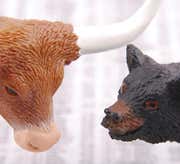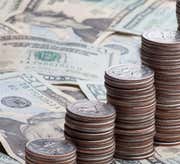|

|
Today’s investors have access to a wide range of investment products, including stocks, bonds, mutual funds and ETFs. Part of what makes these “usual suspects” attractive is that they are familiar and easy to trade – just call your broker or place the order yourself online. When several of these investments are used together, they can form the basis for a strong portfolio.
Most investment professionals would agree that diversification – mixing a wide variety of investments within a single portfolio – helps lower risk and increase returns. And it’s not just different types of investments that are important to constructing a well-diversified portfolio: Your securities should also vary by risk and by industry.
Take stocks, for example. It’s recommended that you have 10-12 stocks in your portfolio to help lower risk. But that doesn’t mean you should buy 10 tech stocks or 10 energy stocks or 10 blue-chip stocks. Instead, you should aim to buy stocks of different sizes and across multiple industries to spread out risk. A lesser-known type of stock – and one that can add a new dimension to your portfolio – is the American Depositary Receipt (ADR). (For more on diversification, see: Risk and Diversification.)
An ADR is a security that represents shares of a non-U.S. company that is held by a U.S. depositary bank outside the United States. According to the Securities and Exchange Commission (SEC), there are more than 2,000 ADRs available today, which represent shares of companies in more than 70 countries worldwide. ADRs allow investors in the U.S. to invest in companies on a more global basis, and they provide an opportunity for non-U.S. companies to access to the U.S. capital markets. (For more, read: How to Trade Foreign Stocks.)
ADRs are a popular way to trade foreign stocks. The world’s largest IPO, Chinese Internet giant Alibaba Group Holding Limited (BABA), for example, is a foreign company that trades in the U.S. as an ADR on the New York Stock Exchange. [L2] Even though you may be less familiar with ADRs than regular stocks, they trade the same way – on major stock exchanges and over-the-counter (OTC) markets. And like regular stocks, ADRs can be a good addition to your portfolio – especially if you’re interested in investing in foreign-based companies. Read on to learn the basics and decide if ADRs might be right for you.
ADR Basics: What Is An ADR?
-
 Investing
InvestingIntroduction To American Depositary Receipts (ADRs)
Investors should look beyond the confines of the U.S. borders to diversify and maximize returns. ADRs are one way to diversify your portfolio and help you achieve better returns when the U.S. ... -
 Investing
InvestingInvesting in foreign stocks: ADRs and GDRs
Depositary Receipts such as ADRs and GDRs are easy ways to invest in foreign stocks regardless of what part of the world you live in. -
 Investing
InvestingAn Introduction To Depositary Receipts
Learn about depositary receipts, which are securities that allow you to invest in a foreign company through your local exchange. -
 Investing
InvestingInvesting Beyond Your Borders
Investing abroad poses risks, but can also help you diversify. Discover ways to invest in foreign stocks. -
 Insights
InsightsMost Powerful And Influential Public Companies In 3 Metrics
There are many ways to rank the word's most powerful companies. Looking at market value, brand value or sales revenue are all methods used to rank the biggest companies in the world. -
 Insights
InsightsEver Wanted to Own International Stocks? Here's How
Tips and strategies for users to trade in different exchanges around the world. -
 Investing
InvestingPlaying It Safe in Foreign Stock Markets
Find out some of the lower-risk ways to invest in foreign markets.


